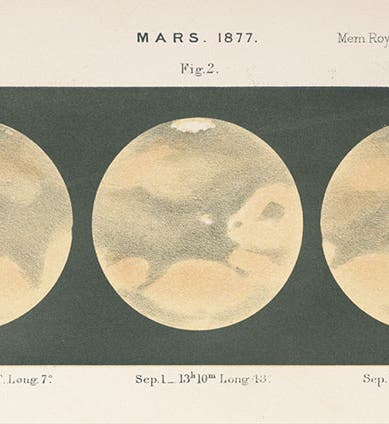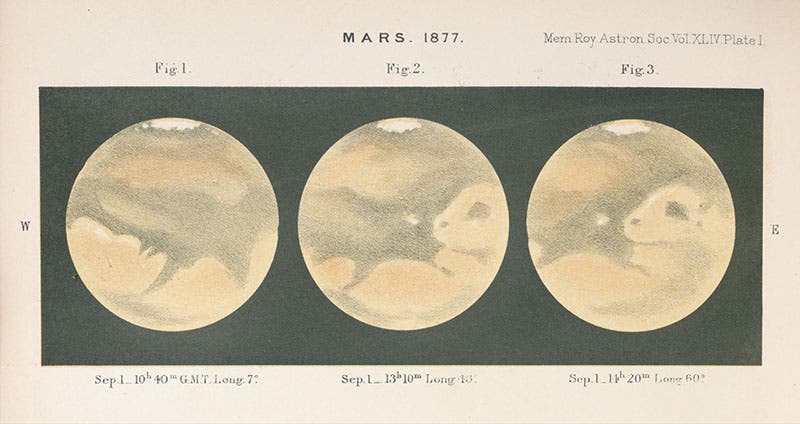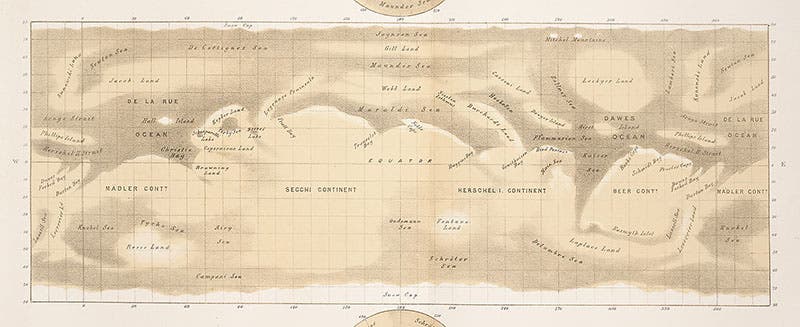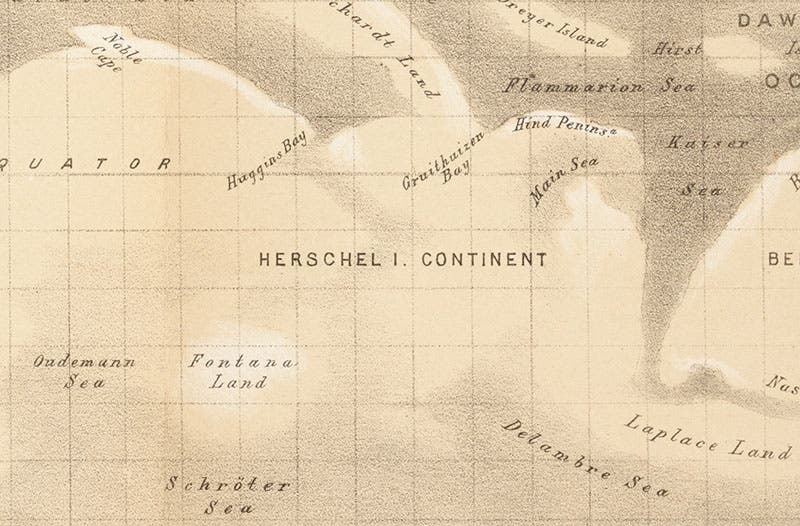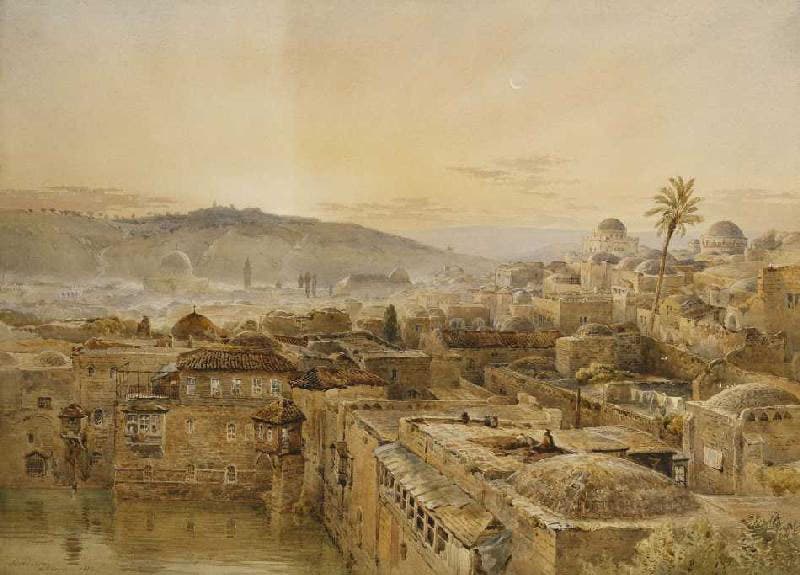Scientist of the Day - Nathaniel Everett Green
Nathaniel Everett Green, an English artist and astronomer, was born Aug. 21, 1823. In the summer of 1877, there was a favorable opposition of Mars, which means Mars was directly opposite the Sun, high in the sky at midnight, and as close as Mars can get to an Earth-bound observer. Green packed up his 13-inch telescope and headed for Madeira, the Portuguese island due west of the Straits of Gibraltar, hopeful that the seeing would be better on the mountainous isle. And indeed it was. When he returned to England, he presented his drawings of Mars to the Royal Astronomical Society, and they were published in 1879 in the Society’s Memoirs. They are some of the finest renditions of Mars ever made, with Green even doing the lithographs himself (see detail, first image, and an entire plate, second image).
In addition, Green published a rectangular map of Mars in his memoir, also a lithograph, and also in color. The folding plate included two polar caps at top and bottom, which we cropped to make the rest of the map as large as possible (third image).
The nomenclature system that Green used on his map had been devised by Richard Proctor in 1867, who named the supposed continents and seas after astronomers, so that we had the Herschel Continent, the De La Rue Ocean, and the Kaiser Sea (see detail of map, fourth image). Green added many new names. Unfortunately for Green and Proctor, Giovanni Schiaparelli also mapped Mars in 1877, and he came up with a different nomenclature system, using classical terms such as Solis Lacus to designate the formations. The Kaiser Sea was, to Schiaparelli, Syrtis Major. And Syrtis Major and Solis Lacus are the names we use today, as Schiaparelli’s scheme won out, and Green's map and nomenclature slipped into obscurity, even though Green’s map was measurably better than Schiaparelli’s. And it didn’t show any imaginary canals.
No doubt part of the reason for the appeal of Green's Mars sketches lies in his abilities as a landscape painter. His pastels and watercolors are abundant on the auction market; we reproduce one here, a view of Jerusalem from Mount Zion, that he made on a visit to the Near East in 1884 (fifth image). There are many reproductions of this painting for sale at the various art poster sites, but I have not been able to determine who has the original.
Several obituaries and biographical notices mention that Green, at the time of his death in 1899, left behind many drawings of the Moon, Mars, Jupiter, and Saturn. I wonder if these drawings still survive in some archive or family collection? They would be a treasure worth seeking out.
William B. Ashworth, Jr., Consultant for the History of Science, Linda Hall Library and Associate Professor emeritus, Department of History, University of Missouri-Kansas City. Comments or corrections are welcome; please direct to ashworthw@umkc.edu.

